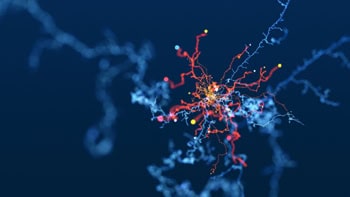Physics World talks to Qionghai Dai, head of Tsinghua University’s Broadband Network and Digital Media Lab, about how the centre is leading the field in computational photography

What is the Broadband Network and Digital Media Lab (BBNC)?
The BBNC was founded in 2001 to carry out pioneering research into the basic theories and key technologies in computational photography and future media. Early work at the lab focused on multimedia processing including computer vision, computer graphics and signal processing. In 2002 the research scope of the lab was extended to include computational photography. This covers several areas such as computer graphics, computer vision and applied optics as well as optical processes like computational illumination, sensing and reconstruction.
What is the current focus for research?
In the past few years, we have further broadened computational photography to “smart imaging” via the integration of computation algorithms. To carry out this expanded programme we began recruiting new staff members and collaborating with researchers around the world who work in fields such as life sciences, medicine and applied optics.
Can you give some examples of these new research areas?
One is gigapixel videography. This aims to break the limitation of human visual perception for a more comprehensive and realistic videography of large-scale dynamic scenes. There are a number of challenges to overcome such as developing the optical, electronic and micro-mechanical design of such systems as well as handling the massive amount of data processing required. However, we believe gigapixel videography will greatly promote developments in both computational photography and computer vision, enabling more potential applications in fields such as national security, surveillance, aerial robots and autonomous driving. Another area is multispectral imaging for agricultural and industrial applications. Current techniques are not dynamic enough to detect real-time changes, but we are developing new methods that are better at pinpointing and controlling crop pests or plant diseases. For example, when it comes to evaluating soil productivity, which is critical for crop growth, the technique can be used to estimate nitrogen, phosphorus, and potassium content.
How big is your research group?
The group currently comprises 11 faculty and staff members, five postdoctoral researchers and around 40 postgraduate students.
What do you look for when recruiting scientists?
Our team members come from different professional fields but they all must have several attributes: passion, a strong sense of responsibility, a rigorous attitude to research, excellent teamwork skills, the ability to innovate and an international outlook. They also need to be able to carry out world-leading cutting-edge research. Our laboratory provides internationally competitive remuneration and stipends to attract the best researchers from home and abroad.
How does collaboration help you to tackle research problems?
International exchanges between students and researchers broaden academic horizons and ensure that we are working in the right direction. By visiting other leading institutions and universities worldwide our students can quickly familiarize themselves with new research areas as well as establish cooperative relationships. Of course, this continues when our researchers return.
What percentage of papers are published with international collaborators?
Almost 20% of our research papers are published with researchers from universities including the Massachusetts Institute of Technology, Stanford, Berkeley and Carnegie Mellon.
Do you work much with industry?
Yes, we collaborate locally, regionally and nationally. For example, our lab and Zhejiang province co-founded the Zhejiang Future Technology Institute, which has incubated tens of companies and created hundreds of jobs.
How do you approach entering new research areas?
Our research into computer vision and computational photography has led us to tackle the urgent need in optical microscopy for large-scale, high-resolution imaging of biological dynamics. We realized that novel tools are indispensable to biomedical discoveries especially in neuroscience and cancer research. In 2012 we proposed developing multi-dimension, multi-scale, computational photography instruments and a year later we received funding from the National Natural Science Foundation of China. So far we have achieved exciting progress in developing a video-rate, giga-pixel imaging system at centimetre-scale and micron-resolution, which enables large-scale, subcellular imaging of neural network dynamics and tumour metastasis.
What potential topics will you tackle in future?
One is virtual-reality and augmented-reality technologies, which still fail to provide a vivid 3D experience for users. They also require heavy and expensive hardware that prevents wide usage in our daily lives. Holographic displays, for example, are not good at displaying dynamic scenes with realistic colours so we want to work on how to directly display the 360 light field to users, which contains almost all the visual information of a scene and gives users the experience of viewing a real scene in our real lives. In addition, we will work on making compact and cheap equipment, for example, perhaps via a pair of glasses.



